
Corporate Governance

by Sutithi Chakraborty, Prince Batheja, Hedda Pahlson-Moller Evalueserve is Knowledge Partner of the Summit for the Future 2006 |
| Summary In the wake of large-scale financial failures such as those of Enron and WorldCom, the world of business has woken up to the need for internal controls. Such internal controls are necessary to ensure equitable distribution of rights among various stakeholders and make every corporate participant accountable for their practices. In other words, the concept of corporate governance has started gaining acceptance and popularity. Corporate governance is a system which provides sufficient controls to the way an organization is managed and hence ensures transparency. Sound corporate governance demands focus on long-term financial returns to all shareowners, full and accurate information disclosure, accountability of board of directors and constructive dialogue with the government and legislators. It also demands adherence to all applicable legislation prevalent in the country of operation. Therefore, the model of corporate governance followed by an organization depends on its geographic location and thus, varies between organizations. Though adherence to corporate governance directives is the onus of all stakeholders, it is the probably the highest for top-level managerial staff. While the practice of sound corporate governance undoubtedly enhances the goodwill of an organization and ensures financial stability, a careful balance needs to be maintained to ensure that excessive focus on controls do not straitjacket innovation and hence affect customer satisfaction. Corporate Governance – the controlled way to success |
| ‘I am not saying there won’t be an Accident now, mind you. They’re funny things – Accidents. You never have them till you’re having them.’ – Winnie-the-Pooh |
| Unpleasant occurrences, like their pleasant counterparts, always happen unexpectedly. Over the years, the world of business has witnessed many such unexpected successes and failures. Enron, Worldcom and Parmalat are some of the examples of the latter in the US and Europe. These corporate failures, and many more, have each caused insurmountable losses – loss of wealth, loss of livelihood, and most importantly, irreparable loss of goodwill. Why did these organizations falter? What went wrong? Could the disasters have been prevented? Could the process of atrophy be arrested at the very onset? This brings us to the discussion of a very important concept – Corporate Governance. Corporate governance refers to the set of rules or regulations that govern the functioning of an organization. According to OECD, “Corporate governance is the system by which business corporations are directed and controlled. The corporate governance structure specifies the distribution of rights and responsibilities among different participants in the corporation, such as, the board, managers, shareholders and other stakeholders, and spells out the rules and procedures for making decisions on corporate affairs. By doing this, it also provides the structure through which the company objectives are set and the means of attaining those objectives and monitoring performance”. The history of corporate governance dates back to the Watergate Scandal, which effectively involved a series of political scandals over 1972-74 and the abuse of power by the Nixon administration in attempts to undermine political opposition. During this period, many companies in the US had engaged in secret political contributions and corrupt payments, thus diluting shareholder value in the long-term. Later, in the nineteen eighties, a number of business failures took place, which made it apparent that the organizations severely lacked proper internal controls and independent audits. In other words, companies were not following the requisite corporate governance directives and instances of corporate failures due to management negligence, non-transparency, unequal distribution of power, etc, were rampant. In last few years, this trend has changed. Companies have started adopting systematic approaches to manoeuvre and manage their business operations. In other words, corporate governance has gradually become popular in the corporate world. Due to its apparent importance in shaping the economic health of corporations, and therefore society in general, corporate governance has also succeeded in attracting a good deal of public interest. Corporate governance ensures accountability, transparency, fairness and responsibility of companies on legal, social and economic affairs. In today’s world, characterised by intense competition, these elements are all crucial for success. According to a survey conducted by McKinsey, shareholders in Latin America and Asia are willing to pay around 20-28% premium for shares of well-governed companies. Similarly, in Europe and the US, shareholders are willing to pay 17-23% and 16-19% premium respectively. Hence the importance of corporate governance can hardly be overemphasised. Sound corporate governance demands the following: […] |
| Read the full article – click here |
Opening Event Summit for the Future 2006

Opening Event Summit for the Future 2006
May 3, morning
When: Wednesday, May 3, 2006, 09:30-12:00
Where: HES School of Economics and Business, Fraijlemaborg 133, 1102 CV Amsterdam Zuidoost
Sijbolt J. Noorda, President of the Board, University of Amsterdam
Keynotes by
Sir Paul Judge, Chair of the Royal Society of Arts
Risk and Enterprise
Glen Hiemstra, Owner, Futurist.com
Video message from the future
Simon Jones, Director, HCS, University of Amsterdam,
former Managing Director, M.I.T. Media Lab Europe
Innovation and Risk – the New Media Experience
Richard D North, Media Fellow, The Institute of Economic Affairs
Risk: The Human Adventure
Moderated by Patrick Crehan, Chairman, Summit for the Future 2006
Club of Amsterdam blog
 | Club of Amsterdam blog October 26: Synthesis of elBulli cuisine October 14: The new Corinthians: How the Web is socialising journalism September 20: A Future Love Story |
News about the future of Drugs & Pharma

Biotech medicines: first biosimilar drug on EU market
Two decades after the first drugs produced by biotechnological means (as opposed to “normal” chemical pharmaceuticals) arrived on the EU market, a number of patents are expiring. This opens the door to the first ‘biogenerics’ – called biosimilar medicines. The Commission has now granted the first marketing authorisation for such a biosimilar product. The medicament, Omnitrope, is intended for the treatment of growth disturbance and growth hormone deficiency in children and adults.

Asia Generic Pharmaceuticals Forecast Report
1 – Japan will be Asia’s biggest branded generics market by the end of the decade, as the government continues to cut drug costs and make hospitals and consumers more price aware
2 – Australia will remain an attractive generics market, despite new access barriers created by the US free trade agreement and reform of the PBS
3 – China’s generics market will continue to expand strongly, but success will depend on brand strength – as the population remains reliant on basic drugs
4 – India’s patent law should clarify distinctions between so-called ‘innovative’ drugs and generics, with gradual insurance sector liberalisation driving demand
5 – Margins on generic drugs will look negative over the forecast period in Taiwan, as the public reimbursement system enters a period of crisis
6 – The strength of Korea’s generic manufacturers will continue, but quality generics makers have little to fear from patent and pricing reform
7 – Exposure to international currency effects will increase import dependency for manufacturers in emerging Asian markets including Indonesia and the Philippines
News about the Future

Cleaner cars
Fuelling innovation in the automotive industry
The CARS 21 group of key stakeholders, chaired by Commission Vice-President Günter Verheugen, published a report setting out the key challenges and way ahead for Europe’s car industry.
European Innovation: What are the key challenges fa cing the European car industry? Can they be tackled at European level or is a global approach required?
Günter Verheugen: “The automotive industry is a global one and the main challenges relate to the increased globalisation of economic activities. In particular, much of the future demand for cars will come from rapidly developing economies, and the European car industry has to be prepared to meet the challenge of mass motorisation in these markets. I believe that European manufacturers’ activities have equipped them well to do so. Policy will also have to play a big role to ensure that European manufacturers compete on a level playing field.”

Where there’s a will… there’s a pact to forge an innovative Europe
What is the solution if progress towards the creation of an ‘innovative Europe’ seems to be stalling? This was the situation considered by an independent expert group chaired by the former Finnish Prime Minister Esko Aho. The group recommended a pact for research and innovation which will require a huge show of will and commitment from political and business leaders in the near future.
Next Event: Wednesday, March 29, 16:30-19:15
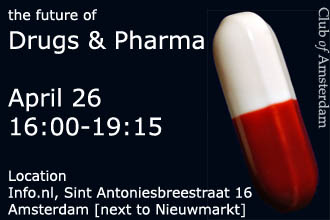
the future of Drugs & Pharma
Wednesday, March 29, 2006
Registration: 16:00-16:30, Conference: 16:30-19:15
Where: Info.nl, Sint Antoniesbreestraat 16, 1011 HB Amsterdam [next to Nieuwmarkt]
With Wilko Coers, Algemeen directeur, Meducom:
Developing new drugs in a nutshell
Ahmed El Sheikh, Scenario Planning, The Pharmaceutical Strategist:
“Evolutionary Medicines”
Discerning the Future of Drugs through the Lenses of a Novel Evolutionary Paradigm.
and our Moderator Cees Langezaal, Managing Partner, Synmind BV
Summit for the Future blog
 | Summit for the Future blog http://summitforthefuture.blogspot.com July 13: Summary of the Summit for the Future 2006 May 22: Dispatches from the Frontier |
Recommended Book
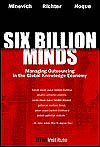
Six Billion Minds: Managing Outsourcing in the Global Knowledge Economy
by Mark Minevich, Faisal Hoque, Frank-Jürgen Richter
This publication of the BTM Institute – Six Billion Minds: Managing Outsourcing in the Global Knowledge Economy – is a wake-up call to global leaders. A collaboration among the most accomplished academics and global leaders (over 60 top international figures), this book examines management challenges and innovation opportunities in light of the profound impact of globalization and the emergence of the knowledge economy. It shows how to build excellence by leveraging the vast global knowledge pool of the “six billion minds” that make up the emerging knowledge economy, which is driven by the convergence of business and technology.
Globalization is leaving a lasting impression. While not perfect, globalization has been extremely successful for the world economy. It has created millions of jobs, raised millions out of poverty and improved the quality of life in countries that once were considered incapable of contributing to the world economy. Instead of debating its merits, we could better spend our time learning how to thrive in it, rather than letting ourselves get trampled by it. It is the role of Six Billion Minds to be a “field guide to globalization.”
What is new today is summed up in the team “knowledge economy.” We believe that Global Outsourcing = Knowledge Economy. And this economy is about discovering and harnessing the knowledge that can spring forth from any mind, anywhere. Six Billion Minds examines the seismic shifts that threaten to engulf long-dominant nations like the United States, whose world leadership in innovation is now being rivaled.
This book tackles the subject with great insights and blunt realities from the business leaders pioneering and setting the pace of global outsourcing as the next big element of the knowledge economy. This economy is about innovation and global outsourcing competitiveness. And sustainable innovation requires a seamless, structured management approach that begins with board and CEO-level issues and connects all the way through technology investment and implementation.
The authors have interviewed the most accomplished business leaders in the world and included not only methods, processes, and practical tips, but also human stories of success and survival – creating this unique exploration of the global knowledge economy.
| Mark Minevich is a speaker at the Summit for the Future having presentation in the Session about Innovation as Risk Taking |
IDEAS Competition
| IDEAS Competition The IDEAS Competition provides an opportunity for members of the MIT community to develop their creative ideas for projects that make a positive impact in the world. Participants work in teams to develop designs, plans, strategies, materials and mechanisms that benefit communities, locally, nationally or internationally. The IDEAS Competition encourages teams to develop and implement projects that make a positive change in the world. Entries are judged on their innovation, feasibility, and community impact. Here are some of the submitted project ideas, including projects submitted by teams who are looking for team-mates. Digital Museum Building a Digital Museum |
| Specimens of preserved animals and plants held in the world’s natural history collections offer a vast and vitally important information resource. They provide not only present day information on species distribution, but also historic information about global biological diversity that in some cases goes back hundreds of years. Projects to electronically database this information, which for most specimens resides exclusively on paper tags, labels, and catalogs, are underway in many institutions, and many others are at either the discussion or planning stage of database development. Harvard University’s Museum of Comparative Zoology, the world’s largest university-based natural history museum, working with the Global Biodiversity Information Facility seeks help in developing efficient and cost-effective tools for databasing the MCZ’s 21,000,000 specimens of birds, frogs, spiders, bats, and all kinds of other animals. These tools should digitally capture collection data for individual specimens from paper records and convert the data to a small number (< 10) of data fields on an electronic spreadsheet. |
| Cracking Buildings – Ghana |
| Loose and shifting ground at the foot of Adaklu Mountain causes many buildings to crack during or soon after construction. A way of adapting current building styles to work with the local environment is needed. The communities at the base of Adaklu Mountain are subject to subsidence causing most of their buildings to crack or crumble in very little time. Building houses is a large investment for local individuals who cannot afford to build structures that will fall down in a short number of years. Many of the older buildings are on the verge of falling, presenting a grave safety concern to the occupants. The short life span of public buildings such as schools and health centres represents a major burden on public funds and outside investment. In Helekpe, a school fell down in 2001 and the government is currently constructing a new building which will accommodate only half the school. Temporary structures have been erected and will continue to be used. Teachers have expressed concerns that without modification of building techniques the new school will also crumble and it will be even harder to attract further funding for a future building. This obviously has a detrimental affect on the education of local children.In Goefe, large cracks in the floor of the school have been reported to shelter snakes, scorpions and spiders which present both a safety hazard and potential distractions. Members of the community have identified the cracking buildings as a factor in migration out of the area.This problem also jeopardizes the successful recruitment of professionals into the area such as teachers, who are reluctant to live and work in such surroundings. Community members are very concerned about this problem and generally attribute it to their location at the foot of the mountain. |
| Design of an Adjustable Bicycle Frame |
| Cycling is emerging as a prominent sport in Special Olympics competition. However, most athletes have special needs which require custom-made bicycles for use both for training and in competitions. It is often difficult for parents and trainers to find bicycles which meet the needs of athletes, e.g. athletes may have one leg shorter than the other. The design problem which emerges is this: can we design an adjustable bicycle frame which could be tailored to individual needs of athletes with special needs? Bicycles available today often have adjustable seats and handle bars. However, the middle frame of bikes are seldom adjustable (to the best of our knowledge). This frame is often firmly welded together to provide a rigid and robust bicycle chassis. The goal in this project would be to design an adjustable frame which still preserves the structural integrity of the bicycle, and meets needed safety requirements. Could we design a frame which could be folded and stretched out (much like the zoom lenses on telescopes), or a frame with some form of hooks and connectors for the crossbars which could be assembled into different sizes? Could the lengths of pedals also be adjustable? What forces (stress, strain) would be acting on various parts of such a design? How safe would such a frame be? A successful design of adjustable bicycle frames would be of great value to the Special Olympics competitions in MA and beyond, and also for the personal training and recreation of special athletes. |
| Electrified Toilet – new water conservation tool |
| My idea is to generate an electrically driven toilet flush at a low cost to replace water flush. This would result in significant water conservation. The idea could be modelled for solar power for areas that lack on-grid electrical supply. |
Creative Leadership
| Creative Leadership by Sooraj Mittal, Hedda Pahlson-Moller, Evalueserve |
| Is leadership limited to the ability of a person to influence other people in getting things done, above their normal standard and quality, or does the society need a new breed of leaders who can evolve on a continuous basis, addressing new challenges? Traditionally, leaders have been known to possess the ability to motivate people, identifying their strengths, nurturing them and making their team function in a synthesized manner, thereby delivering up to its true potential. However, over a period of time societies and systems evolved and so have the dynamics of leadership. |
| Over a period of time, many nations have struggled for independence, apartheid, etc while, most resorted to violent means to achieve their cause, leading to mass destruction on both sides. But, only a few creative leaders like Mahatma Gandhi, Martin Luther King, Nelson Mandela resolved such issues through their revolutionary idea of non-violence. Thereby, not only helping attain the objective but also creating an example and inspiration for the coming generations that there is always a non-conventional and perhaps a less traveled path. There are three sets of situations from where a leader can be identified or nurtured: |
| A person possessing a certain skill set and has the ability to take up the leadership roleLack or absence of proper leadership or certainly a crisis situation brings out extraordinary leadership skills to handle the situationPeople who choose to become leaders constantly try to develop the required skill set |
| As the world becomes flat, it has become a level playing field for all the players, irrespective of the geography, cast or creed. The availability of similar tangible resources to all the players has made the environment into a place of cutthroat competition. In order to develop in such a competitive environment companies have to heavily rely on the intellectual capital, primarily present in the form of its employees. They need leaders who can guide and bring out the best from its human capital. Their role is not limited to merely guiding people in the right direction. They require creative leaders, who do not only limit their role to addressing problems through novel solutions, but by giving new viewpoints on how to resolve problems in the future as well. This brings us to a pertinent question – can someone be taught how to think creatively? Organizations spend heavily on training their employees, especially training potential leaders and inculcating leadership values. However, this does not ensure imagination, creativity or ethical behavior in the audience. These qualities develop over a period of time with experience and exposure to various kinds of problems. In addition, it also requires a conscious effort on the part of the individual to grow in that direction. Creative leaders can be broadly segregated as Re-definers and Re-directors. The former being those who introduce a new dimension to existing ideas (such as Bill Gates redefining the computer), while the latter could be those who find a new way of working (like what Henry Ford did when he introduced the assembly line production system). Before any organization/society demands for a creative leader, it should ensure that an environment is created, where such a leader can be identified and groomed. Society needs to be flexible in terms of accepting new ideas. For instance, at 3M, scientists spend almost 15% of their time on personal activities. As a result, Fry, one of the scientists, invented the simple, yet innovative, ‘Post-its’! During his free time, Fry used to sing at the church; however whenever he used small paper pieces as bookmarks, they would invariably fall. Fry recalled a weak adhesive developed by his company – he used it to develop easily detachable bookmarks, which we now see at homes and offices alike. Essentially, the difference between a leader and a creative leader can be compared to the difference between Subash Chandra Bose, an extremist, and Mahatma Gandhi, a Moderate. They hold a significant place in the history books, as both had fought against the colonial rule of the British Empire. Yet both had adopted different ways to address the problem. While, Bose believed in the conventional way of violence (an eye for an eye), Mahatma addressed the problem by means of non-violence and non-cooperation movements. As a result, the approach adopted by Bose, resulted in fear amongst the British for some period of time and had a short-term impact on the people. While, the approach adopted by Mahatma Gandhi had a long lasting impact on British as well as the common public, leading to a united effort to achieve independence for the nation. A society, as we know it, combines the likes of people from varied backgrounds, having differing skill-sets and divergent thoughts. Collective leadership ensures that this multicultural society moves in a cohesive and collective manner to attain the defined objectives into realistic and attainable goals. Today’s world is very chaotic and complex. The skill set required to address these problems are not present in one person. Moreover, the problems are not just limited to one system or society. Therefore, in order to address such problems a collective effort is required. For instance, the war against terrorism has to be a collective effort on part of all the nations across the globe, as the problem is not just limited to the US or India. It has an equal chance of striking any nation at any given moment. For instance, the defense force of a country would comprise of the Army, Navy and the Airforce. All have their own skill set and strategic importance to the security of a nation. Yet, when it comes to a war, a collective effort is required from all the three arms of win the battle. If the role of the leader has evolved, so have team dynamics. No longer can a group/department of people be necessarily classified as a team. These are a set of individuals, who are doing the job assigned to them. Essentially, a team is a group of people who collectively collaborate to achieve one predefined objective. The relationship of a leader with his/her team has evolved from a supervisory role to a multi-tasking role. The leader is a guide, mentor, motivator as well as a team member. Instead of moving ahead of the team, he/she has to move along with it. More than dependence, it is now a question of synergies and inter-dependence. The only thing, which is constant, is change, over a period of time societies have evolved and so has the way in which people think and see each other. Yet the same old concepts still exist, although the ways they are handled and demanded by the society have evolved. From a leader who leads from the front and keeps people motivated, to a leader who can provide innovative solutions to new set of problems. |
Agenda
| April 26 the future of Drugs & Pharma Wednesday, April 26, 2006, 16:00-19:15 Location: Info.nl, Sint Antoniesbreestraat 16, 1011 HB Amsterdam [Next to Nieuwmarkt] May 3 Opening Event Summit for the Future 2006 May 3, morning When: Wednesday, May 3, 2006, 09:30-12:00Registration Desk: 08:30-09:30 Where: HES School of Economics and Business, Fraijlemaborg 133, 1102 CV Amsterdam Zuidoost May 3-5 Summit for the Future 2006 May 3-5, 2006 The topics are Life Sciences, Media & Entertainment, Trade – Asia, Healthcare, Corporate Governance, Innovation as Risk Taking, Knowledge based Risk Management, Values and Spirituality, Cross-Cultural Competence and Creative Leadership. Where: HES School of Economics and Business, Fraijlemaborg 133, 1102 CV Amsterdam Zuidoost |
| May 31 the future of Reputation Management |
| June 28 the future of Journalism / Ethics in Journalism |

Club of Amsterdam Open Business Club
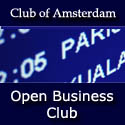 | Club of Amsterdam Open Business Club Are you interested in networking, sharing visions, ideas about your future, the future of your industry, society, discussing issues, which are relevant for yourself as well as for the ‘global’ community? The future starts now – join our online platform …: |

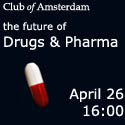
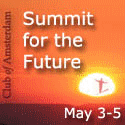

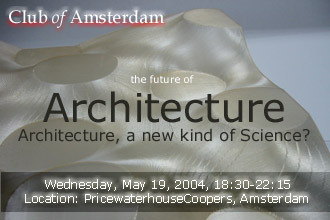

Customer Reviews
Thanks for submitting your comment!